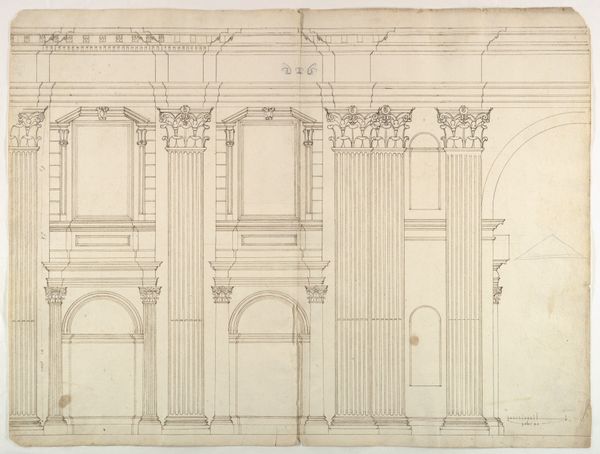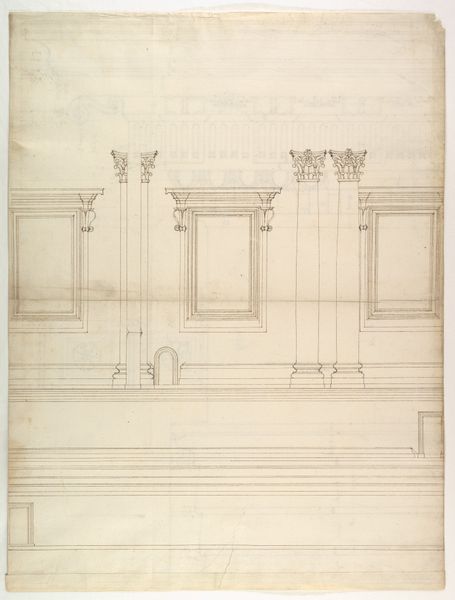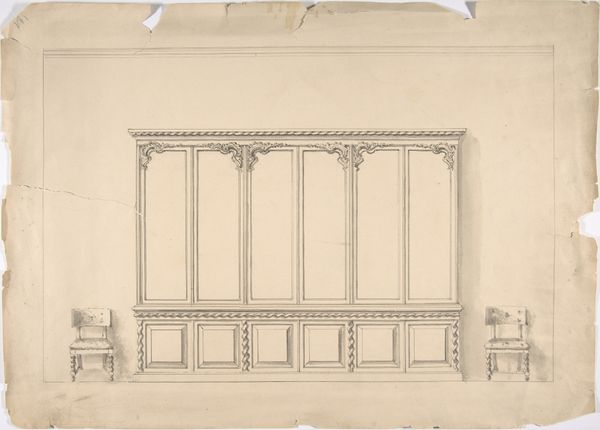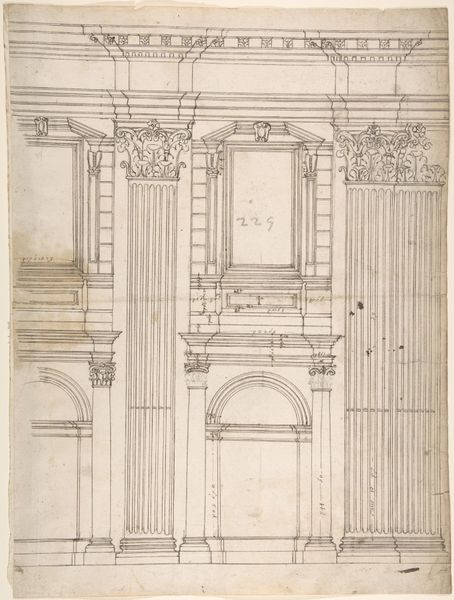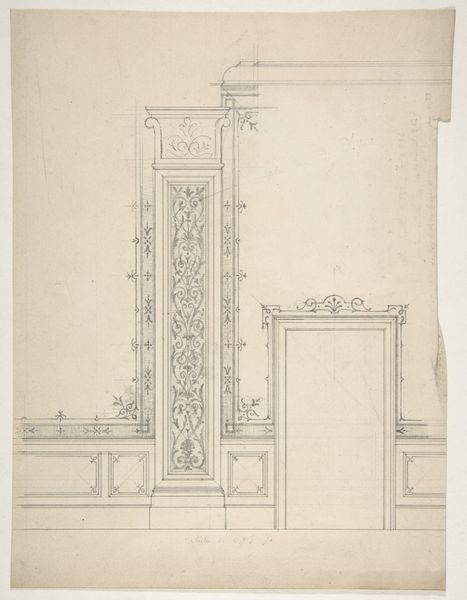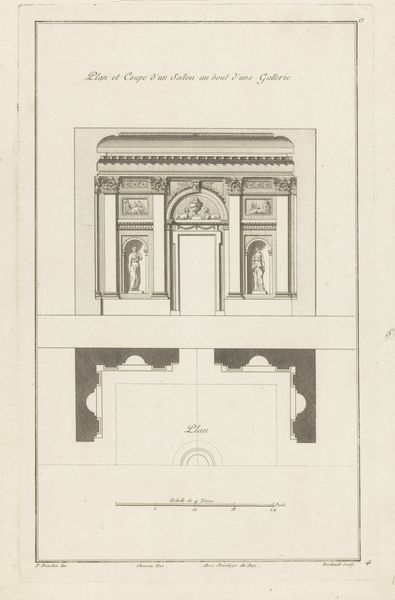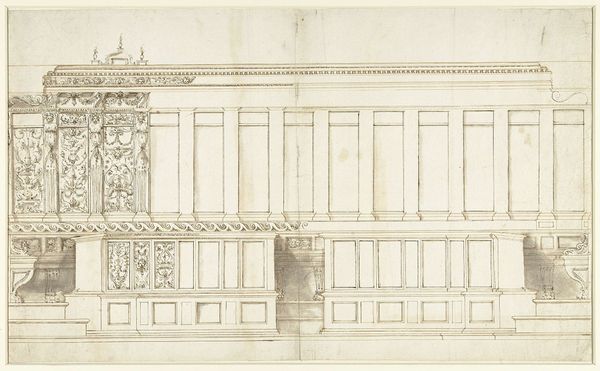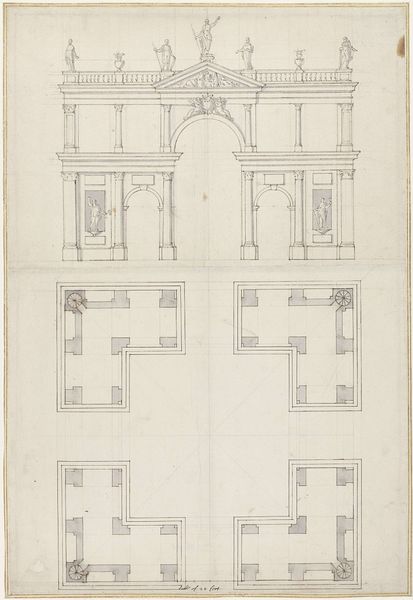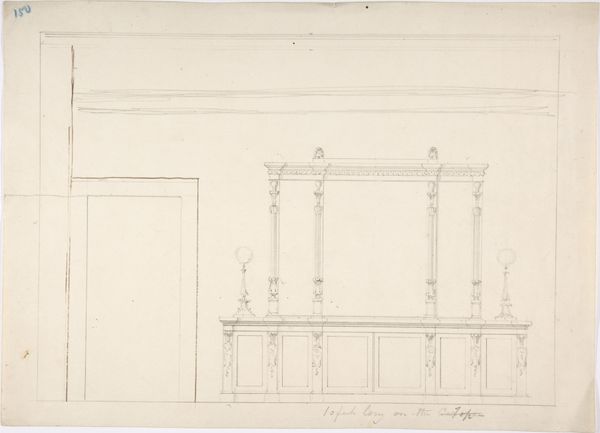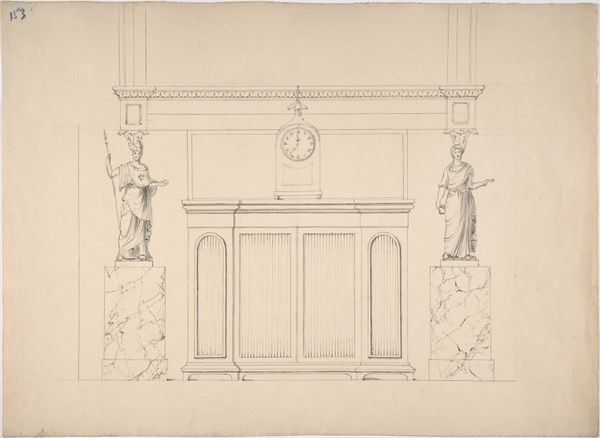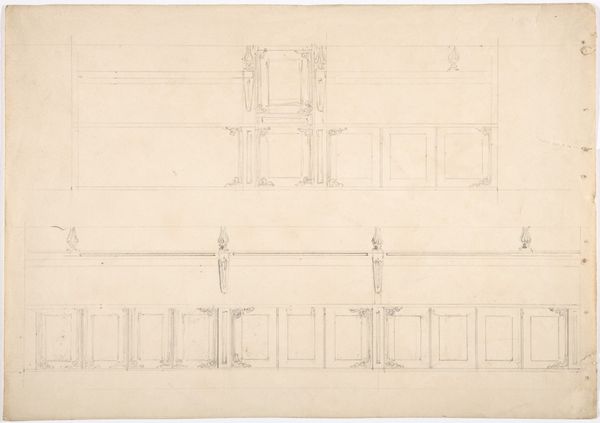
St. Peter's, drum, interior, elevation (recto) St. Peter's, drum, pedestal, section (verso) 1500 - 1560
0:00
0:00
drawing, architecture
#
architectural sketch
#
drawing
#
aged paper
#
toned paper
#
light pencil work
#
homemade paper
#
sketch book
#
tea stained
#
11_renaissance
#
arch
#
architecture drawing
#
italian-renaissance
#
architecture
Dimensions: sheet: 22 5/8 x 17 3/16 in. (57.4 x 43.7 cm)
Copyright: Public Domain
Editor: Here we have Étienne Dupérac’s "St. Peter's, drum, interior, elevation (recto) St. Peter's, drum, pedestal, section (verso)", a drawing dating from 1500 to 1560. It looks like a technical architectural sketch. The precise lines create an interesting play of verticality and horizontality. What do you see in this piece? Curator: The drawing commands attention through its rigorous geometry and the stark contrast between the precision of the architectural elements and the texture of the aged paper. Note the linear perspective, which offers a view into the proposed spatial relationships within St. Peter’s. Observe the strategic placement of the columns, windows, and horizontal registers; it underscores the Renaissance ideal of order and rationality. Editor: The symmetry is certainly striking. Curator: Indeed. Consider, too, the tonal variations in the paper, the light pencil work; they subtly activate the surface, drawing attention to the material qualities of the drawing itself. How might you interpret the use of such meticulous detail? Editor: It emphasizes the importance of structural integrity and design during the Renaissance, but beyond that, I am not sure. Curator: Precisely. Now think about the lines and shapes—how do they contribute to the overall composition? Editor: I see... The linear quality guides the viewer’s eye, creating a sense of depth. The arch motifs also lend it some visual flair, like, the contrast of geometric shapes create an active, engaging surface that, despite its age, still speaks to the fundamental principles of architectural design. Curator: A fine observation. This drawing is not simply a plan, but an exercise in the principles of form. Editor: Thank you. I hadn’t considered the dialogue between geometric shapes, between a Renaissance idea and its depiction through a drawing.
Comments
No comments
Be the first to comment and join the conversation on the ultimate creative platform.
